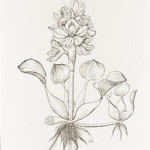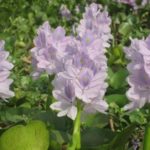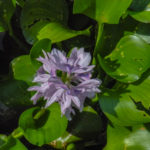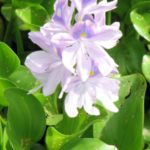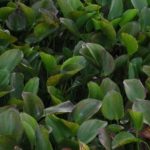Pontederia crassipes
Non-Native
USDA, NRCS. 2018. The PLANTS Database (http://plants.usda.gov, 28 March 2018). National Plant Data Team, Greensboro, NC 27401-4901 USA.
Illustration courtesy of University of Florida/IFAS Center for Aquatic and Invasive Plants. Used with permission.
What is Water Hyacinth?
Overview
Physical Characteristics
Leaves:
- Under water: long and thin
- Above water: wide, usually spongy
Body:
- Floating plant
Flowers:
- Slightly 2-lipped
- 6 stamen
- Long anthers attached near the base
- Showy, light blue to bluish purple
- 1.5 to 2.25 inches long and wide
Roots:
- Roots at end of leaves
Where Does it Grow?
EDDMapS. 2024. Early Detection & Distribution Mapping System. The University of Georgia – Center for Invasive Species and Ecosystem Health. Available online at http://www.eddmaps.org/; last accessed January 17, 2024.
Non-Native
Water hyacinth is native to South America, but has naturalized much of the Southern U.S. It grows in ponds, streams, and ditches.
Is it Invasive?
Water hyacinth is non-native to North America. Water hyacinth is a very aggressive invader and can form thick mats. If these mats cover the entire surface of the pond, they can cause oxygen depletion and fish kills. Water hyacinth should be controlled so they do not cover the entire pond.
This is a non-native plant that should not be grown as it is invasive and illegal to possess or transport this species in Texas. Please report sightings to the Texas Parks and Wildlife Department at (512) 389-4800.
